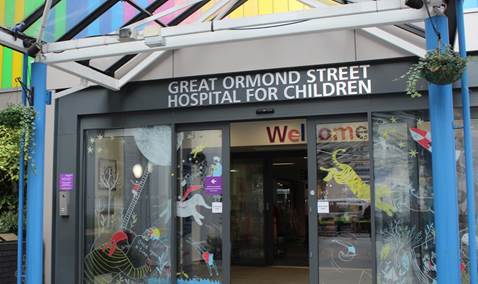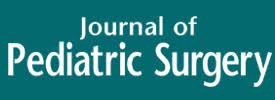ACADEMIC OUTPUT IN THE UK: THE LEAGUE TABLES

Professor Mark Davenport
Kings’s College Hospital London

Professor Paul Losty
Alder Hey Children’s Hospital
University Of Liverpool
One of the founding principles of BAPS is to ‘facilitate research‘ – admittedly a fairly ill-defined concept but it certainly sponsors paediatric surgical research by supporting surgeons-in-training early in their career and organizes the BAPS Annual International Congress which showcases this and other such academic activities sharing them with trainees, consultants and many overseas delegates. At one such conference, we became interested in the question of how much of the published world literature in paediatic surgery is really emerging from UK centres and as an aside who just might be doing it? To try to answer this question we, together with Wajid Jawaid a senior trainee in the South East Consortium looked at the publication record of all UK & Northern Ireland departments from 2005 – 2020 to get some idea of quantity at least.
Where Does The Literature Come From?
 Perhaps not surprisingly, we found that GOSH in London was research ‘top dog‘ with over 400 published papers to its name. Alder Hey Children’s Hospital & University Of Liverpool and Kings College Hospital in South London then came in at #2 and #3 respectively. The rest of the “top ten” places in the League Table was largely drawn from large metropolitan Children’s Hospitals in England, such as Birmingham (#5), Manchester (#6) and Leeds (#7), with Glasgow (#9) being the leading Scottish centre. There was then a bit of a gap in numbers from #10 to #11 and then we are all the way down to Hull finishing at #26.
Perhaps not surprisingly, we found that GOSH in London was research ‘top dog‘ with over 400 published papers to its name. Alder Hey Children’s Hospital & University Of Liverpool and Kings College Hospital in South London then came in at #2 and #3 respectively. The rest of the “top ten” places in the League Table was largely drawn from large metropolitan Children’s Hospitals in England, such as Birmingham (#5), Manchester (#6) and Leeds (#7), with Glasgow (#9) being the leading Scottish centre. There was then a bit of a gap in numbers from #10 to #11 and then we are all the way down to Hull finishing at #26.
| Ranking | Institution | Total |
| 1 | GOSH (London) | 454 |
| 2 | Liverpool | 253 |
| 3 | KCH (London) | 238 |
| 4 | Southampton | 214 |
| 5 | Birmingham | 207 |
| 6 | Manchester | 204 |
| 7 | Leeds | 196 |
| 8 | Oxford | 153 |
| 9 | Glasgow | 144 |
| 10 | Sheffield | 126 |
What perhaps was more concerning was that if we divided the output of the ‘Top Ten‘ into two 5-year periods (2005-9 and 2015-19) there was a decrease overall with only 4 surgical units increasing output in that later period. These findings remember are in the context of a ‘huge increase’ in the worldwide paediatric surgical literature and proliferation of any number of journals to put them in.
Who Are The Academic Superstars?
| Ranking | Institution | Top
h-index * |
| 1 | GOSH (London) | Lewis Spitz (56),
Paolo de Coppi (51), |
| 2 | Liverpool | Paul D Losty (36),
Simon Kenny (29) |
| 3 | KCH (London) | Mark Davenport (50) |
| 4 | Southampton | David Burge (26),
Nigel Hall (26) |
| 5 | Birmingham | Khalid Sharif (22) |
| 6 | Manchester | Adrian Bianchi (27) |
| 7 | Leeds | Mark Stringer (44) |
| 8 | Oxford | Paul Johnson (51) |
| 9 | Glasgow | Robert Carachi (22) |
| 10 | Sheffield | Sean Marven (16) |
The survey concentrated on Departmental output in its calculations of outcome activity with only one published item counting no matter how many authors were on the papers or whether it was a case report or a randomized trial. To look at individual performance we looked at the Hirsch or h-index is calculated by Scopus (you can look yours up!) which is a combination of the number of papers and each paper’s citation count. The average for an American paediatric surgeon has been calculated at an h-index = 12, and it turns out that the average for a UK paediatric surgeon was ……12 also .
Obviously the higher a h-index is the better it is, and Table 2 shows the ‘high-flyers‘ for the ‘Top 10‘ paediatric surgical units during the study period. Those who are currently active are highlighted in bold text and some you may not recognise either because of retirement or their emigration to pastures new.
What’s The Most Cited UK paper?
Just for interest we also looked at the most influential papers each unit had contributed over the years. Having released your work into the critical maelstrom you may want to see how successful it is and how many other authors bother to read it or at least quote it in their own work. Table 3 illustrates the most cited papers for the Top Ten units. Not surprisingly, most are somewhat timeworn as the citation index is a cumulative thing over time but there are some interesting observations. Systematic reviews & meta-analyses are common in our speciality field though the ‘ top-cited ’ paper from GOSH is actually a case report, albeit one with a re-engineered tracheal implant! The most cited paper by the way was a review from Kings College Hospital and Birmingham Children’s on biliary atresia published in the Lancet.
| Rank | Institution | Type | Title | Reference | Total |
| 1 | GOSH (London) | Case report | Stem-cell-based, tissue engineered tracheal replacement in a child: A 2-year follow-up study. | Elliott MJ, De Coppi, P, Speggiorin S et al. Lancet 2012:380; 994-1000.
|
303 |
| Review | A systematic review of the impact of volume of surgery and specialization on patient outcome | Chowdhury MM, Dagash H, Pierro, A. Brit J Surg 2007;94: 145-161
|
385 | ||
| Review | Oesophageal atresia.
|
Spitz L. Orphanet J Rare Diseases 2007; 2,24.
|
271 | ||
| 2 | Liverpool | Meta-analysis | Value of liver herniation in prediction of outcome in fetal congenital diaphragmatic hernia: A systematic review and meta-analysis | Mullassery D, Ba’Ath ME, Jesudason EC,
Losty PD. Ultr Obstet Gynecol 2010;35: 609-614.
|
114 |
| 3 | KCH (London) | Review | Biliary atresia | Hartley JL, Davenport M, Kelly DA. Lancet 2009; 374: 1704-1713.
|
442 |
| 4 | Southampton | Clinical series | Conservative management of antenatally diagnosed cystic lung malformations
|
Ng C, Stanwell J, Burge DM., et al. Arch Dis Child 2014;99: 432-437. [13] | 51 |
| 5 | Birmingham | Clinical series | Biliary atresia in England and Wales: Results of centralization and new benchmark
|
Davenport M, Ong, E, Sharif, K et al. J Pediatr Surg 2011;46: 1689-1694. | 136 |
| 6 | Manchester | Clinical series | Intestinal rehabilitation and bowel reconstructive surgery: Improved outcomes in children with short bowel syndrome
|
Khalil BA, Ba’ath ME, Aziz A et al. J Pediatr Gastroenterol Nutr 2012;54: 505-509.
|
64 |
| 7 | Leeds | Clinical series | The long-term outcome of prenatally detected posterior urethral valves: A 10 to 23-year follow-up study
|
Kousidis G, Thomas DFM, Morgan H et al. BJU International 2008; 102: 1020-1024. | 53 |
| 8 | Oxford | Clinical series | Gastrostomy tube feeding in children with cerebral palsy: A prospective, longitudinal study
|
Sullivan PB, Juszczak E, Bachlet, AME, et al. Developmental Medicine and Child Neurology 2005;47:77-85. | 158 |
| 9 | Glasgow | Meta-analysis | A meta-analysis of the risk of boys with isolated cryptorchidism developing testicular cancer in later life
|
Lip SZL, Murchison LED, Cullis PS et al. Arch Dis Child 2013;98: 20-26. | 79 |
| 10 | Sheffield | Clinical series | Experience of bedside preformed silo staged reduction and closure for gastroschisis
|
Owen A, Marven S, Jackson L et al. J Pediatr Surg 2006;41:1830-1835. | 56 |
So what did we conclude? Certainly that the role of research should really be unquestioned in its desire to drive Paediatric Surgery forward to all new frontiers. There is little doubt that high quality research though does require a hybrid amalgamation of scientific translational research, randomized clinical trials and disease-specific registries. There is also very much a role for quality retrospective case-control series as well and these, for the most part, did form the bulk of the analysis. Each paediatric surgeon can now see where your unit stands in the League Table in relation to others and these types of rankings do say something about academic drive and enthusiasm in all UK paediatric surgical centres.
 The full article on which this commentary is based is published in the Journal of Pediatric Surgery as: Davenport M, Jawaid WB, Losty PD UK paediatric surgical academic output (2005-2020): A cause for concern? J Pediatr Surg. 2021 Aug 1:S0022-3468(21)00532-7. doi: 10.1016/j.jpedsurg.2021.07.023. Online ahead of print.
The full article on which this commentary is based is published in the Journal of Pediatric Surgery as: Davenport M, Jawaid WB, Losty PD UK paediatric surgical academic output (2005-2020): A cause for concern? J Pediatr Surg. 2021 Aug 1:S0022-3468(21)00532-7. doi: 10.1016/j.jpedsurg.2021.07.023. Online ahead of print.
Mark Davenport
Paul D Losty
August 2021
